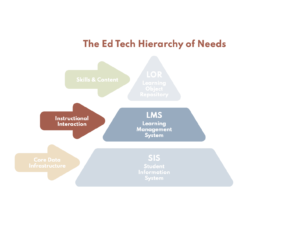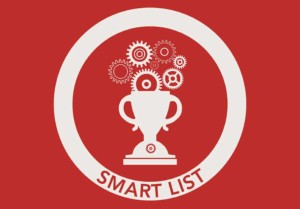The Learner-Centered Competency-Based Learning Management System
Key Points
-
Most legacy solutions still are not able to support a learner-centered and competency-based system needed to document the unbundled and credentialed pathways that will best serve all learners.
-
Through our partner work with XQ Institute, we identified core criteria that any next-generation LMS should incorporate.

With more and more emphasis on pathways built around competencies as a better way to support learners in their journey towards a family-sustaining wage, Learning Management Systems (LMS) are trying to keep up. Most LMS solutions are well-aligned to the standards-based assessment systems, allow organized curriculum design and facilitate asynchronous learning. Yet, most legacy solutions still are not able to support a learner-centered and competency-based system needed to document the unbundled and credentialed pathways that will best serve all learners.
Through our partner work with XQ Institute, we identified core criteria that any next-generation LMS should incorporate.
- Competency. Competencies can be added, edited and nested in an organizing hierarchy to accommodate both standards and competency granularity levels. Competencies are not unique to one course or class but can be linked to multiple courses or classes.
- Learning Experience. Learning experiences can be created by educators and/or learners (tasks, activities, projects, units, modules) where competencies can be connected at the task or project level. Learning experiences can be shared/stored in a library for use by other educators and searchable by competency.
- Self-assessment. For any given learning experience, the learner can submit and evaluate their artifact/evidence against any competency.
- Assessment. For any given learning experience, the educator or a community member can evaluate the submitted artifact/evidence against any competency.
- Documenting. Multiple methods are available to evaluate whether a learner demonstrates proficiency on a competency. These could include teacher decisions, calculations (most recent scores, decaying average, mean of least three scores, etc.) or external moderation methods. Once proficiency is confirmed, options should exist to award a badge/credential that is assigned to the learner, interoperable, and exportable as an LER (Learning and Employment Record) to store in a digital wallet owned by the learner.
- Reporting. Learners, educators and caregivers can view an aggregated dashboard to determine learner progress toward completion of competencies over any time period.
- Analysis. An educator or admin can view aggregated performance data around groups of learners (based on identifying data connected to the learner). This may include grade level, course groupings, school, district, etc.
Next-Generation Platforms
The technology stack for most schools now is significant and includes many pedagogical, communication, assessment and database tools. The next-generation LMS is integrated into the Student Information System (SIS) and Comprehensive Learner Record (CLR) for linking individual learner proficiency with future opportunities. Mastery transcripts (sometimes called “page 2” transcripts will eventually replace the one-page course/grade/credit format. Transcripts (or the competency validations within them) can be a Learning and Employment Record (LER) that is stored in a digital wallet as part of the Comprehensive Learner Record (CLR).
Learner-centered and competency-based
While many competency-based schools have bootstrapped solutions with spreadsheets, a number of platforms in our review built learners into the core of the design and generally met the core criteria from above. Area9 Capable is a newcomer to the K-12 space but has built significant credibility in the adult learning landscape. The Capable platform provides extensive lesson-building tools, a project-based learning interface and a competency-based dashboard. LiFT Learning, Foundry and HEADRUSH Learning are both project-based and competency-based learning platforms with sophisticated and customizable interfaces and reporting for school partners. MyLC was launched by the Kettle-Moraine School District (WI) and is customizable for other schools interested in competency-based assessment. Building21 is designing the next generation of their original competency-based solution built on the open-source Slate LMS and extended spreadsheets/documents version after years of using the solution within their network. The new platform is designed to meet the needs of all schools with competency-based progressions (for example, built around a Portrait of a Graduate) with a simple, learner–centered approach. Beta versions will be available in Summer 2023.
Badging and credentialing
Most of the platforms above are also in the design phase for badging and credentialing. While badging is available in existing legacy platforms (Schoology and Canvas), competencies are often restricted to the course level (meaning competencies are assigned to a single course) rather than a system wide view where competency progress can be viewed across multiple courses. Instructure’s (Canvas company) recent acquisition of Badgr (rolled into its Canvas Credentials platform) may provide Canvas K-12 users with opportunities to connect badges to Canvas assessment in the future.
A few platforms are leaning into connecting skill and competency with employment via Learning and Employment Records (LER) functionality. Territorium has just launched in the United States with an AI-driven Life Journey toolkit after successful international use cases. The platform links CareerBit (which connects learners with employment and higher ed opportunities using Lightcast market research and recommends pathways and learning experiences to achieve employment goals), assessments to evaluate learner progress towards goals and a comprehensive learner record to document lifetime learning).
“Our LifeJourney toolkit empowers institutions and enables all students, especially the nearly 40 million adults with some or no college degree, to demonstrate their complete capabilities in a verified digital record, including the skills they have acquired from all of their experiences,” said Jonell Sanchez, Chief Growth Officer, Territorium.
Mastery-based and personalized
Cortex and Empower Learning are both personalized mastery-based learning platforms that use a variety of features to track mastery of standards for both teachers and students. Empower Learning was originally designed with Alaska schools as ‘Educate’ by 3 Shapes, then rebranded ‘Empower’ through a partnership with Lindsay Unified School District (and their Race To The Top Funds). This platform has since joined Marzano’s Center for Competency Based Education). Cortex was launched out of Brooklyn Lab Schools to meet the needs of its personalized learning model.
Schoology (owned by Powerschool) and Canvas, are widely used legacy LMS platforms and both can incorporate a standards-based assessment. Canvas uses a Mastery Gradebook feature based on Outcomes and Schoology allows for standards/rubrics to be linked to assignments.
While not moving beyond its existing use case of lightweight assessment and document-sharing around the Google ecosystem, Google Classroom is the most widely used (and currently free) “LMS” type platform. Modifications and add-ons to this platform may be a successful tactic to build a widely adopted next-generation LMS.
Learner showcase and portfolio
See-Saw, widely used in elementary schools, provides a visually appealing lightweight but evidence heavy portfolio platform that showcases student work to parents. Unrulr allows for sophisticated story-telling and interactive features that feel like a social media stream and allow learners to document their learning experiences while peers, community members and educators can provide feedback. EKadence’s portfolio feature connected to district-determined 21st-century skills enhances their traditional grade book and LMS. The NuVu Portfolio Tool, build for NuVu’s specific project-based learning program, also allows a clean showcasing of student work.
Future
It is clear that platforms will need to be more learner-centered and learner-driven in the future as the ecosystem becomes more unbundled. Successful technology that expands on existing LMS features will include, 1) learner-centered LMS, where learners can co-design experiences with educators; 2) tools to assess different types of competencies. These include core competencies (ELA, math, civics, etc.), transferable competencies (from Portraits of Graduates, durable skills, power skills, etc.) and technical (16 Career Cluster CTE) competencies; 3) portfolio features that allow learners to select, display and share badges and credentials connected to competency; and 4) connection of these verified learner skills with potential educational and employment opportunities via Learning and Employment record data stored in one or more digital wallets.
Did we miss a platform? We recognize that new platforms launch every year and that we were unable to list every possible platform in this post. Contact me at [email protected] if you have a solution to share so we can learn more.








0 Comments
Leave a Comment
Your email address will not be published. All fields are required.